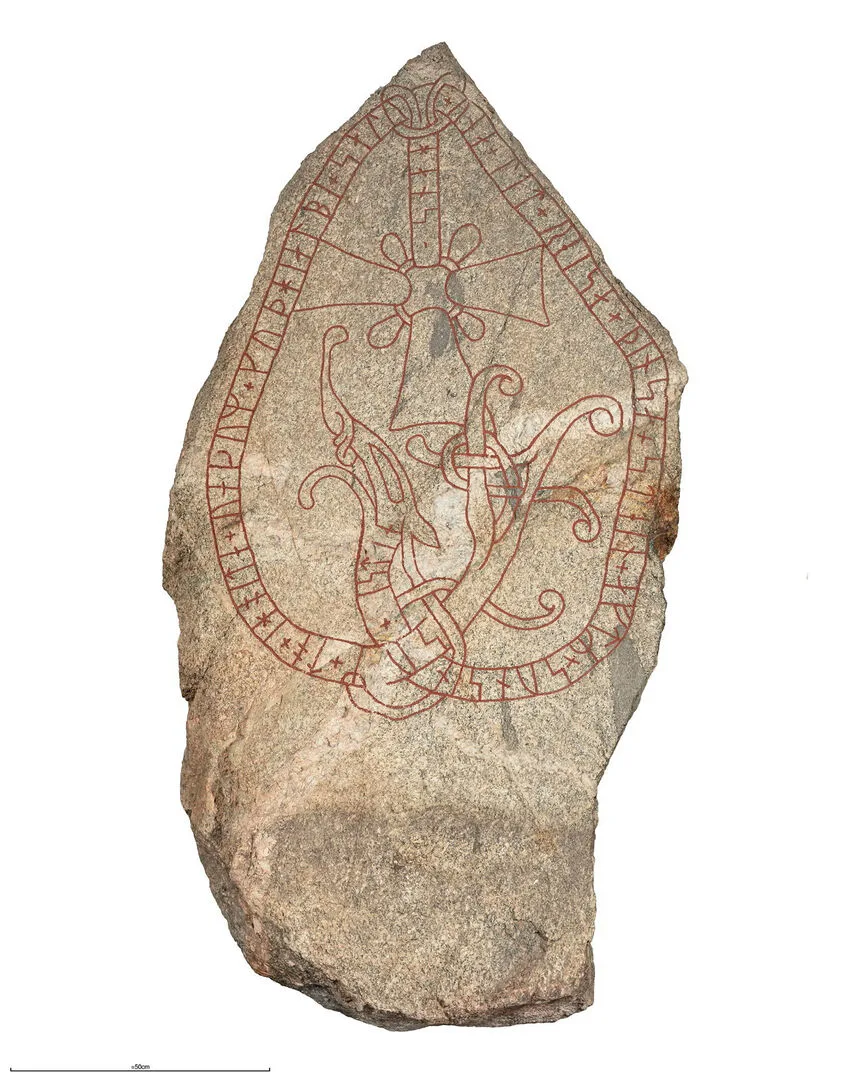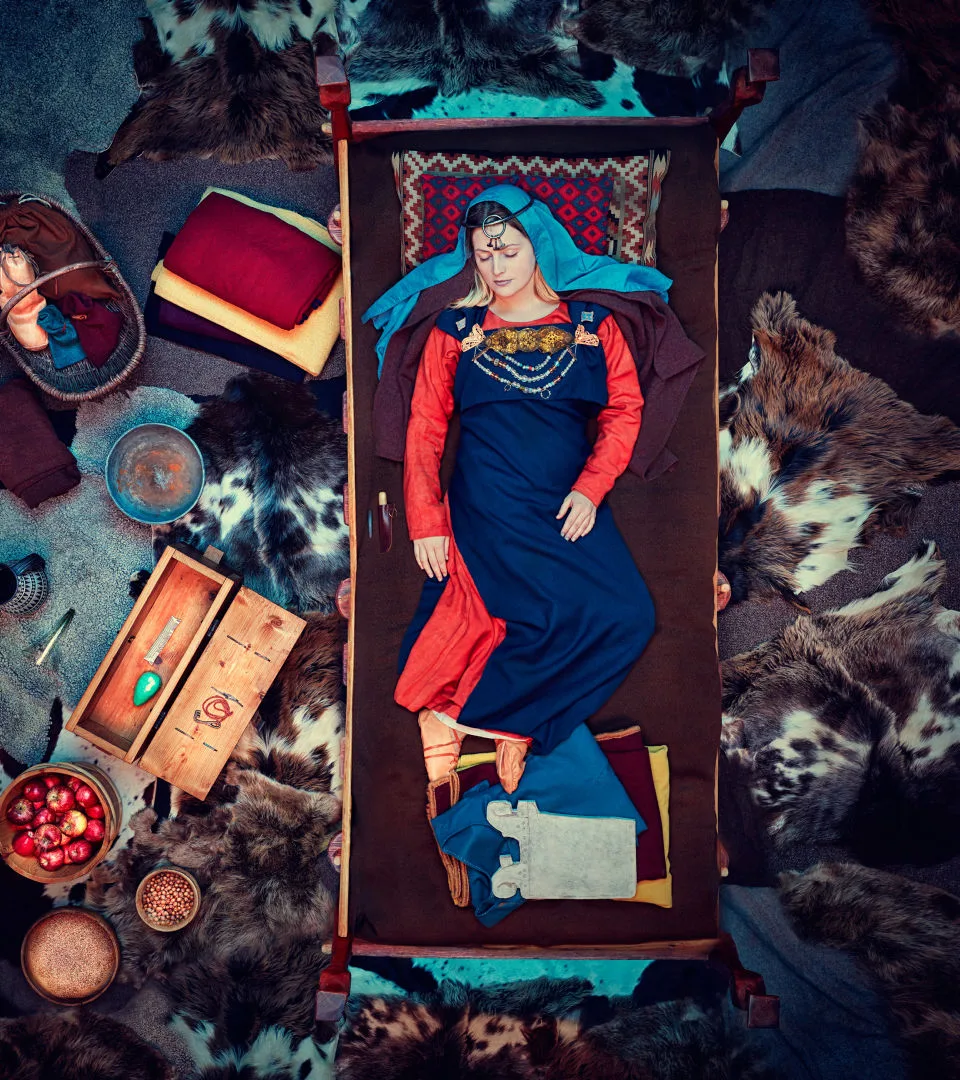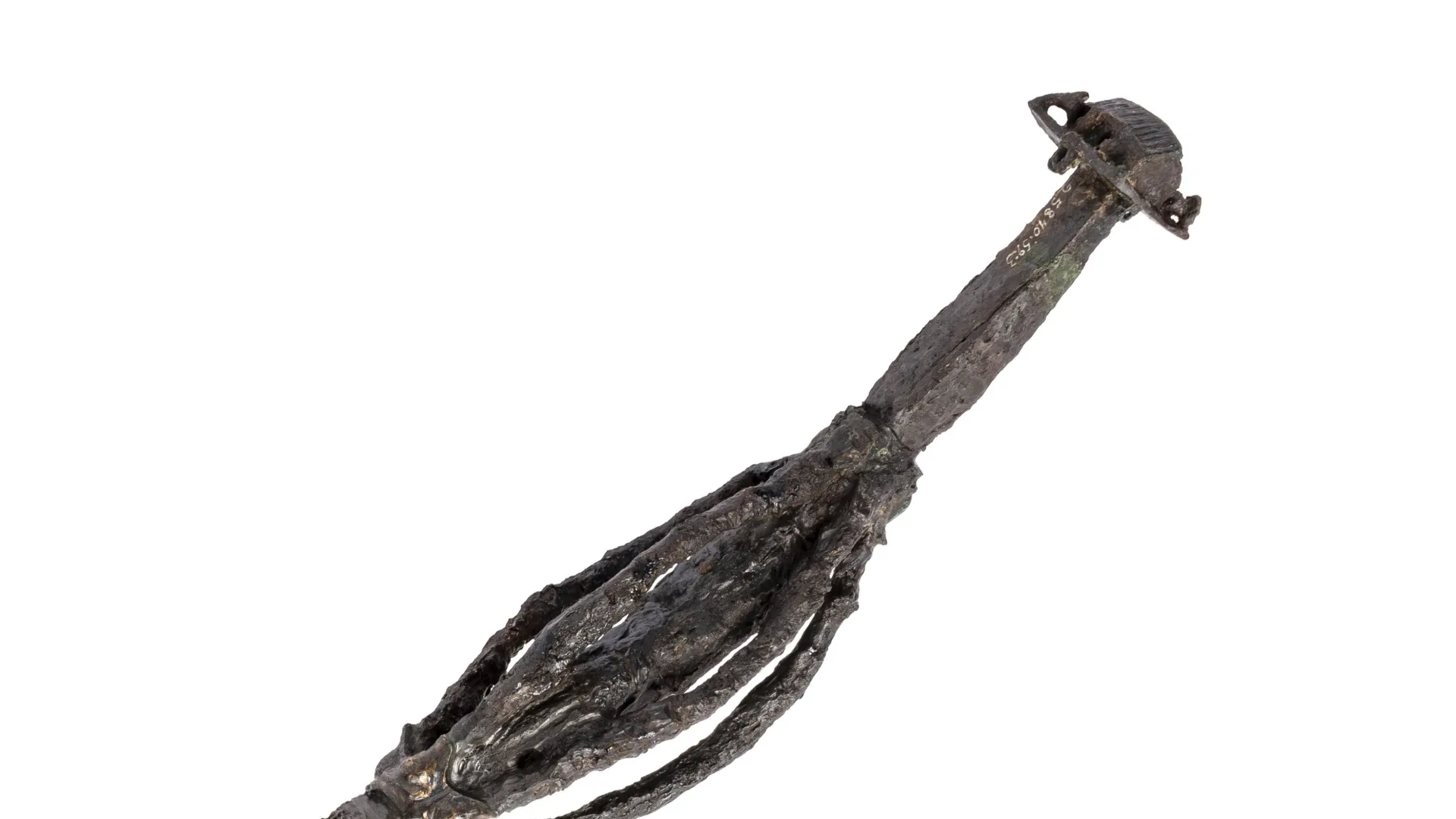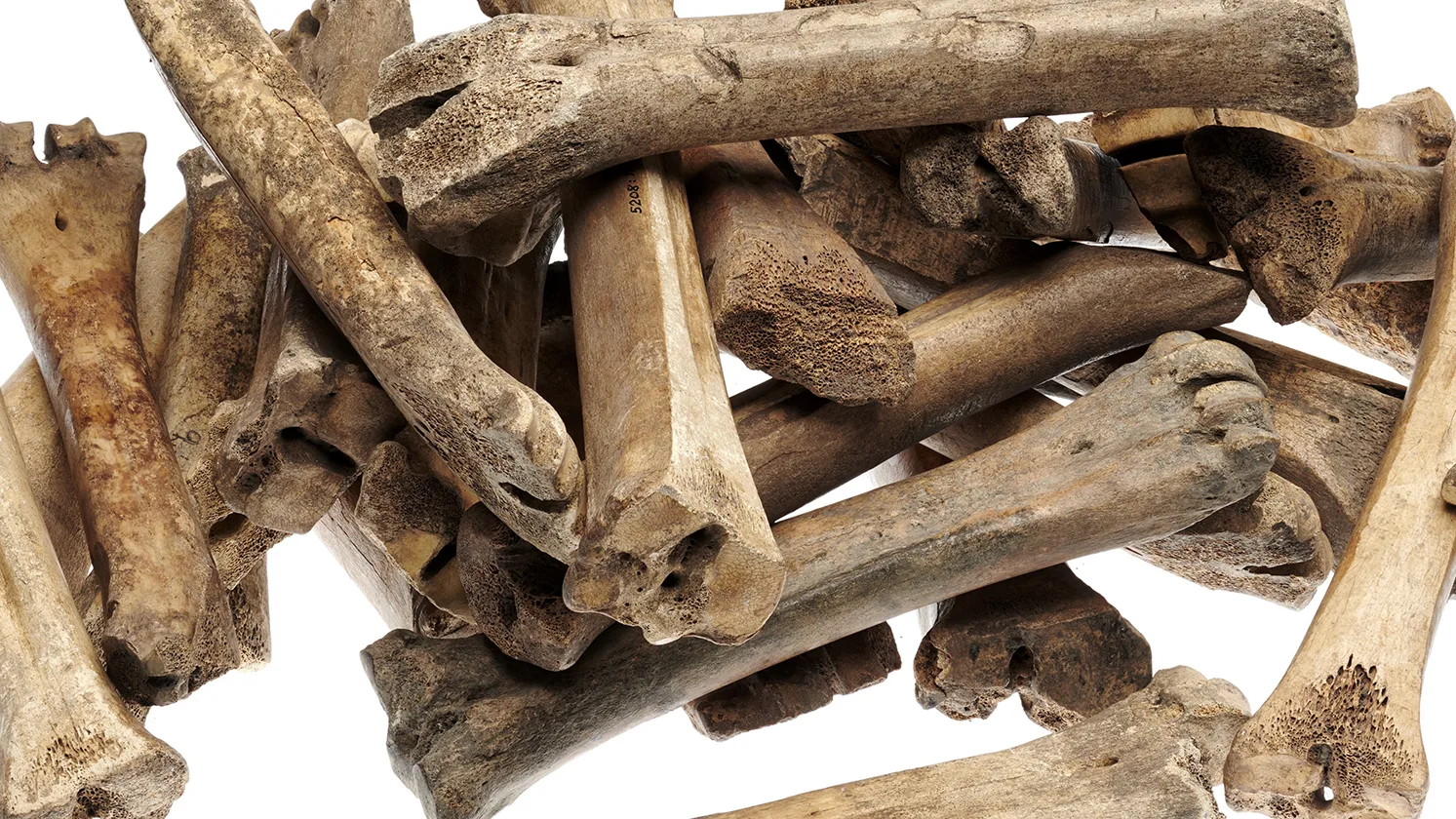Women in the Viking Age
Iron Age
500 BC – AD 1100
Viking Age
AD 800 – AD 1100
Middle Ages
AD 1050 – AD 1520
Archaeology and written sources, such as Old Norse sagas, reveal a different picture. Viking Age graves show that men and women were marked by different symbols and roles, yet there were wealthy and powerful individuals of both sexes.

Pendant
Silver pendant depicting a woman carrying a drinking horn. Found at Klinta, Gotland.
On view at Historiska museet in the exhibition Guldrummet
Viking women in the sagas
Njál’s Saga was written in Iceland during the 13th century, but it draws on a much older tradition. The story recounts the feuds between the families of Gunnar and Njál. At first sight, the saga depicts a male world, where men’s quarrels and battles dominate the narrative.
But on closer inspection, the men appear almost like puppets. Women direct events from the background, though they never take part in the fighting themselves. The bloodthirsty Hallgerd, at one point Gunnar’s wife, succeeds in having two husbands, a foster-father and many others killed over trifles.
The Viking woman’s position as mistress of the household meant that she was the undisputed head of the farm and home. This is reflected in the key as one of her most distinctive symbols. Keys have been found in many Viking women’s graves. Far into later times the key symbolised authority over the household.

Viking Age key
Metal key found at Ejvide, Gotland.
In a contemporary lens, this might seem a kind of restriction, as though women carried responsibility instead of public power. But since the farm was the very centre of the Viking worldview, it should not be seen that way.
Women could, for example, commission the raising of runestones, a public and outward-facing act of great importance. Many stones carry inscriptions stating that they were erected by women. Some scholars argue that there were also female magicians and cult leaders. Finds from a woman’s grave at Köpingsvik may be evidence of this.

Unna's stone
One of two rune stones that originally stood at what may have been known as Husa in the Viking Age. The ornamentation, the shape of the runes, and the inscription indicate that the stone was carved by Visäte sometime during the final decades of the eleventh century. The inscription, in translation, reads: “Unna had this stone raised in memory of her son Östen, who died in baptismal robes. May God help his soul.” From Torsätra, Västra Ryd Parish, Uppland.
The powerful woman of Köpingsvik
At Köpingsvik on Öland, a magnificent funeral pyre was raised at the end of the 10th century. Upon it, a deceased woman was burned, adorned with splendid jewellery, including various bronze brooches and numerous beads. She was probably laid out in a ship.

Jug
Copper jug found at Klinta, Gotland.
The grave has been excavated, and traces were found of horse, cattle, pig, sheep, dog, cat, bear and chicken. Among the many grave goods were an Oriental copper jug and a bronze dish from Western Europe. These objects show that the buried woman was an aristocrat, likely the head of a powerful Öland lineage with an estate at Köpingsvik.
The most remarkable object in the grave was an iron ceremonial staff. This has been interpreted as a völva’s staff, a tool for foretelling the future.






